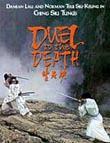1970
Director: Minoru Yamada
Starring: Mitsunobu Kaneko, Akio Ito
We all have things that we grew up with as kids that we retain a certain nostalgic affection for, be it a favorite toy, a place we liked going to,a particular song, maybe even a breakfast cereal. For me, it was all about television and being a child of the 1970s (the early 70s, that is), there were some interesting options. Saturday mornings were dominated by Sid and Marty Kroft with the likes of Puff n Stuff, Lidsville and especially Land of the Lost. But the real fun was to be had weekday afternoons. This is where a selection of English dubbed Japanese imports were flooding the airwaves. There were cartoons like Kimba, Speed Racer and Marine Boy. But even more interesting (well, for me) were the live actions shows. Ultraman was the most popular as well as The Space Giants (aka Ambassador Magma). But out of all of these shows, the one that left the most indelible impression and the one that I feel the greatest nostalgic affection for was a program called Johnny Sokko and His Flying Robot (aka Giant Robot).
Created by Mitsuteru Yokoyama (who had previously created the similarly themed Tetsujin 28 aka Gigantor) for Toei in 1967, Johnny Sokko and His Flying Robot in it's English form, told of the evil alien Emperor Guillotine and his Gargoyle Gang. Their objective (wait for it): to conquer Earth. They forced an American (German perhaps?) scientist to build a hundred foot tall robot to assist them in their conquest. However, the remote control (located inside a wristwatch) falls into the hands of a ten year old kid (played by the late child actor Mitsunobu Kaneko who had previously starred in Akuma Kun). With the robot now under his control, he joins a local, slightly futuristic group of fighters/secret agents called Unicorn. In each of the 26 episodes, The Unicorns foil the Gargoyles plans while Johnny has the robot battle whatever giant monster that Guillotine and his minions bring forth.
Looking back on it now with (slightly) more adult eyes, I see just how cheap and ridiculous this show was. It was Toei's attempt to compete with Toho's more popular Ultraman, but on less than 1/5 the budget. It's amazing that such an ambitious program was even attempted under that much restriction. The traveling mattes are the worst I have ever seen and apparently only a dozen or so monster costumes were created and then repeated (with only the slightest of changes) for the remaining episodes. The plots were also pretty brainless. The Unicorns always got caught or tricked not because The Gargoyles were so clever (they weren't) but because the Unicorns were so extraordinarily stupid. Then The Unicorns would escape only through the incredible carelessness of The Gargoyles. Maybe not so obvious when seen as a five year old, but plenty obvious for... well anyone over five...
Still, there are three major things about the show which has kept it as the strongest of childhood memories. First and foremost was the robot itself. It was a terrific, totally no-nonsense creation. Originally, the head was to resemble that of a samurai, but the weight of it was too much for the actor inside to keep steady. As a result, the sides were shaved down considerably until it more resembled the Egyptian Sphinx. For me that robot was it, the greatest thing ever. And that "Mosh" sound it makes when going into action entered into the subconcious permanently. The second was the idea of this giant, nearly idestructible robot being under the control of a small boy. What youngin' couldn't relate to something like that?! The third reason? Violence! Unlike Ultraman, this show contained a jaw dropping amount of human violence. Because ray guns with animated beams couldn't be afforded, machine guns were used in their place! Most episodes featured dozens of lackeys from both sides being (bloodlessly) gunned down. Even Johnny himself is shot in the final episode (he ends up being O.K. though)! The censors must have been been napping off big time, because none of it was cut. Plus the most unheard of aspect of all, the robot dies, kamikaze style in the final episode! WTF?! I'm pretty sure that many lil' tykes out there were utterly traumatized by it because after a few runs (at least in my area) the last episode was pulled from the air.
Released by AIP in the U.S. in 1969 to limited markets, the show went national in 1971 (which is when I first saw it) and became a huge favorite here; bigger even than in it's country of origin. To help promote it, in 1970 AIP edited five episodes together (including the first and last) to create a made for T.V movie called Voyage Into Space (a real head scratcher of a title since the entire series took place on Earth). This provided the introduction to the show for many viewers (I was too young when the movie version first ran and caught it a couple of years later). For these fans, Voyage Into Space has become quite a cult item with many having even fonder memories of it in this incarnation than as a series.
Now, nearly forty years later and despite the inherent goofiness of it all, I can still watch Johnny Sokko and Voyage Into Space with the kind of (admittedly self conscious) thrill that could only be afforded by something with so strong a nostalgic value. Ah, sweet memories...
**** / **** (Nostalgia Rating)




